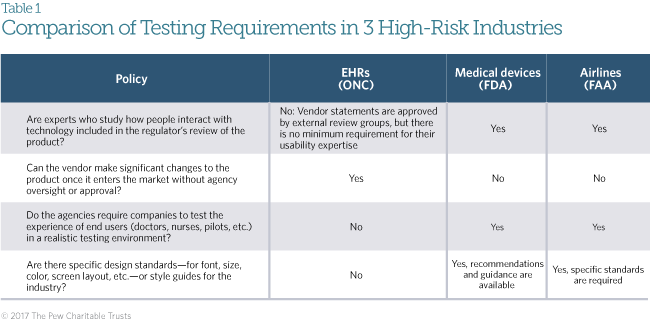Aviation and Medical Device Fields Offer Lessons for Electronic Health Records
More testing and collaboration can improve patient safety

A new study offers steps electronic health record vendors can take to improve patient safety.
© Getty Images
A recent MedStar Health study found that testing of electronic health record (EHR) systems does not require real-world usability trials—unlike the practice in two other high-risk industries, aviation and medical devices—and that may contribute to medical errors. The researchers concluded that while the precise solutions in one sector often can’t be replicated in another, the relatively young EHR industry would benefit from considering enhanced testing and greater collaboration among companies and the federal government.
Usability refers to both the look and design of an EHR system and how clinicians interact with it. EHR design, especially of icons, landing pages, and other schematic designs, can vary tremendously by vendor. While the use of EHRs has improved care, usability issues have resulted in harm to patients, including fatalities.
The authors of the study, published in the online Journal of the American Medical Informatics Association, urged that EHR testing, both before and after systems enter the market, be more rigorous. The researchers said scenarios should replicate real-world environments and include doctors and other end users, who could help detect problems before EHRs are put into use. The Office of the National Coordinator for Health IT (ONC)—the agency that oversees EHRs—currently allows developers to create their own simulated environments and scenarios. By contrast, the Federal Aviation Administration (FAA) and Food and Drug Administration require testing of systems or devices, respectively, in a real or realistic environment. The FAA and FDA also require end users such as doctors or pilots to be involved in testing. ONC, on the other hand, does not require end-user testing for EHRs, according to the researchers. Table 1 provides an overview of the differences in the regulation of EHRs, medical devices, and the airline industry.
The aviation industry also offers lessons in the benefits of greater collaboration among service providers and federal agencies. Following the recommendations of two safety commissions after two major airline accidents in 1996, the industry and stakeholders formed the Commercial Aviation Safety Team. The organization has served as a venue for airlines, aviation experts, and safety experts to share safety-related data and analytics without fear of penalty. Since it was formed in 1998, passenger deaths have dropped by more than 80 percent. A new health IT safety collaborative could use a similar approach to address EHR usability issues and offer a sounding board for solutions.
The EHR industry should leverage lessons learned from other fields to improve usability and help clinicians deliver high-quality care. Two lessons are clear from this study: More robust public-private collaboration and enhanced testing can improve safety for patients.
Ben Moscovitch is a manager with The Pew Charitable Trusts’ health information technology program.







